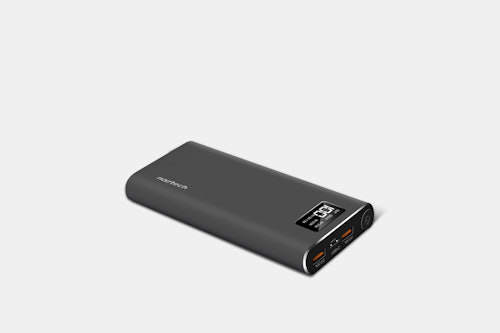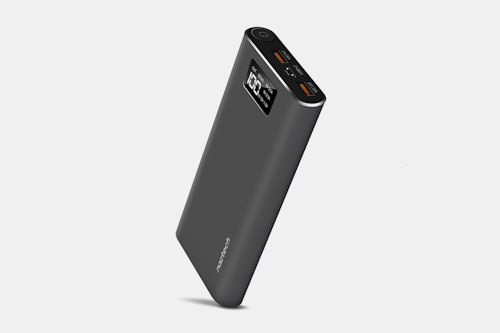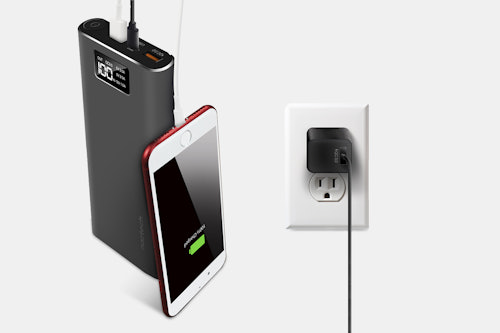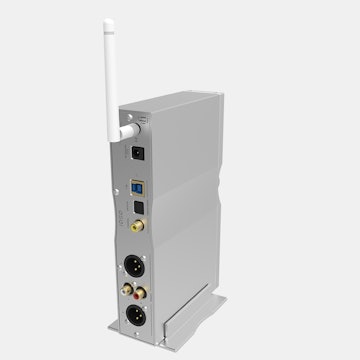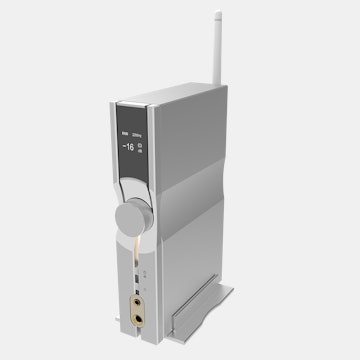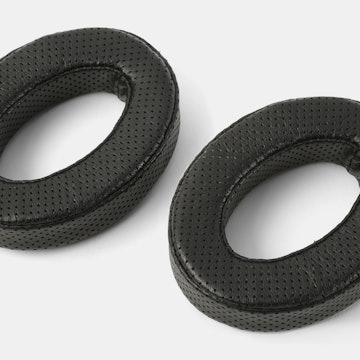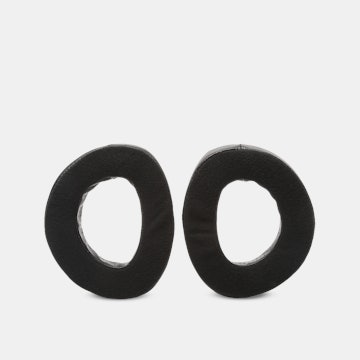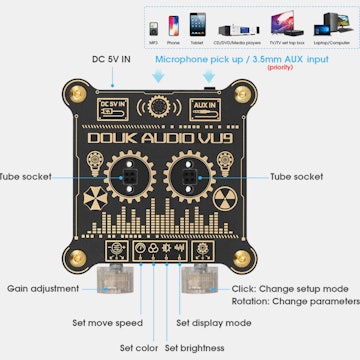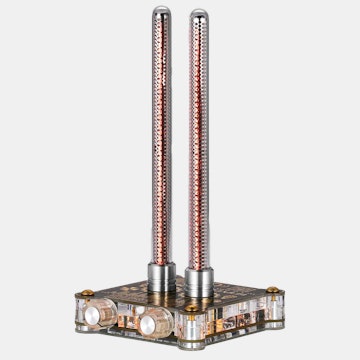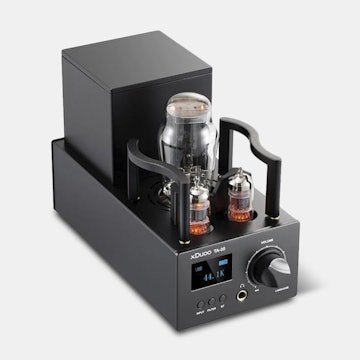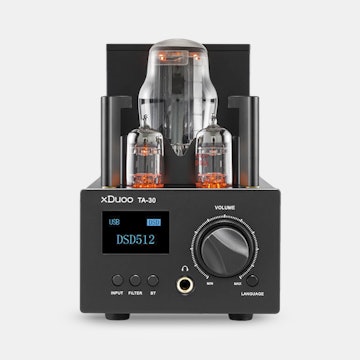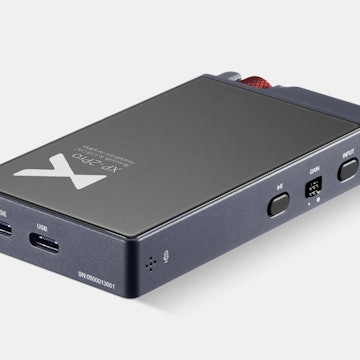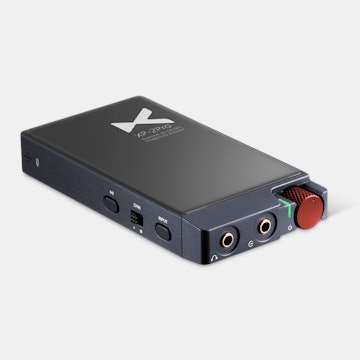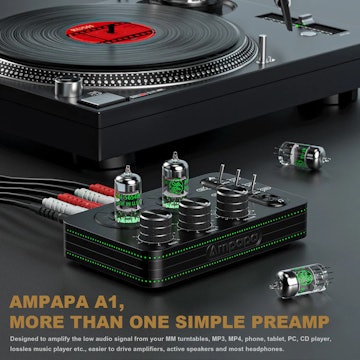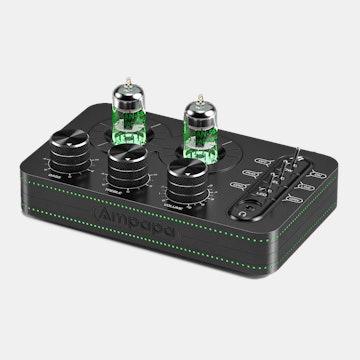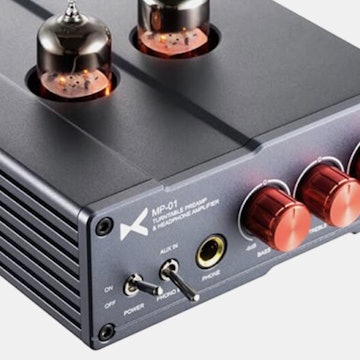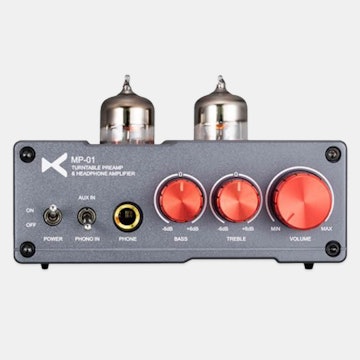Click to view our Accessibility Statement or contact us with accessibility-related questions















Naztech 26,800mAh QC 3.0/USB-C Power Bank
Naztech 26,800mAh QC 3.0/USB-C Power Bank
bookmark_border
Where's the price?
To negotiate the best possible price for our customers, we agree to hide prices prior to logging in.
1.3K requests
Product Description
An airport-friendly charging station, a backup battery for your laptop, and a road trip power hub for the whole family, this mammoth 26,800mAh power bank is a lifesaver on the go. Capable of charging the latest iPhone 13 times over, it features two Quick Charge 3.0 USB outputs and a Quick Charge 3.0 USB-C output, meaning it can rapidly charge three devices at the same time—it even has pass-through charging technology Read More

search
close
Sort by: Top Conversations
keyboard_arrow_down
Taiman
50
Apr 13, 2018
Just completed my personal test of Naztech 26800 vs Anker 26800 PD (Power Delivery @ 30 watts).
Controls:
1. Same USB-C port used on Macbook
2. Same Anker USB-C to USB-C cable used
3. Macbook placed in same location (never moved)
4. Naztech and Anker placed in same location while charging Macbook
5. USB-C cable plugged into power bank using same orientation
6. Both given 30 minutes to charge Macbook in sleep mode
7. Both battery packs near new condition and full charge before testing (both less than 30 days old)
Naztech results: Battery of Macbook before charging..~37% - After 30 minutes..~ 48% Anker results: Battery of Macbook before charging..~48% - After 30 minutes..~70%
Naztech charge = ~11% Anker PD charge = ~22%
Conclusion: Anker PD charged at twice the rate of Naztech.

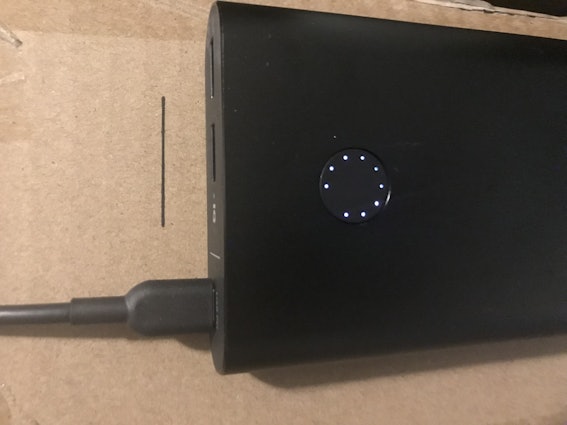
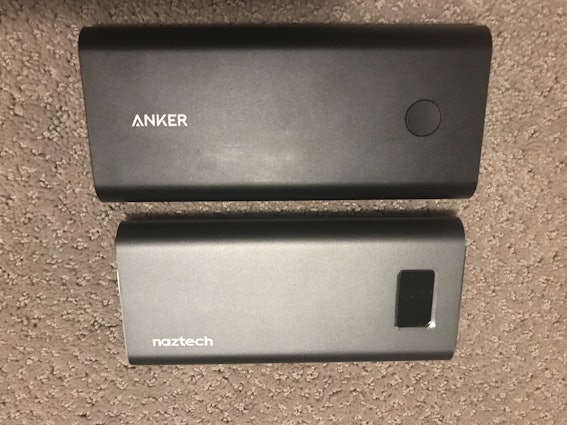
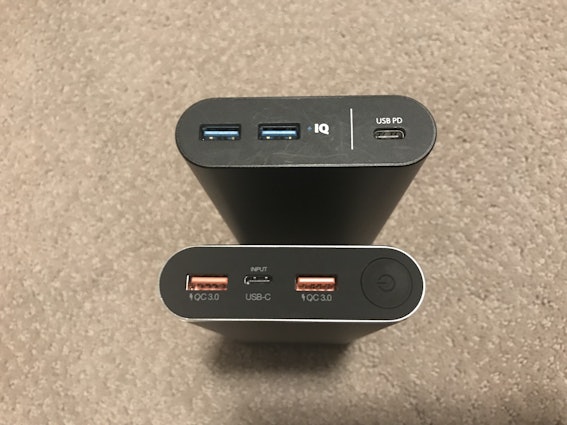
Naztech results: Battery of Macbook before charging..~37% - After 30 minutes..~ 48% Anker results: Battery of Macbook before charging..~48% - After 30 minutes..~70%
Naztech charge = ~11% Anker PD charge = ~22%
Conclusion: Anker PD charged at twice the rate of Naztech.




Period
24
Apr 16, 2018
TaimanTo add to this, the main reason the Anker device charged faster is because the Anker device supports Power Delivery over Type-C, while the Naztech only supports 15W max over Type-C.
So the Anker charged at twice the rate because its PD spec supports up to 20V/1.5A, or 30W, literally double the speed of the Naztech.
What you need to consider in the end here is what you really need a power bank for. If you have a ton of 2-3 generation old cellphones and USB devices, you might want this Naztech power bank instead because it supports Quick Charge 3.0 where the Anker you mentioned doesn't. If you have current-gen Type-C smartphones, a Macbook, or something like a Nintendo Switch, buying a power bank that supports Power Delivery will benefit you equally or greater over this. (Or alternatively, you could shell out a bit more money and get a power bank with both QC3.0 and PD so you have both options available)
For example, my LG V30 supports both QC3.0 and PD, and charges at the same 18W rate on both, so it makes no difference to me which bank I use. My Nintendo Switch can make use of PD though and charge faster. So in the end, a PD device is better suited for me.
Just things for everyone to think about!
So the Anker charged at twice the rate because its PD spec supports up to 20V/1.5A, or 30W, literally double the speed of the Naztech.
What you need to consider in the end here is what you really need a power bank for. If you have a ton of 2-3 generation old cellphones and USB devices, you might want this Naztech power bank instead because it supports Quick Charge 3.0 where the Anker you mentioned doesn't. If you have current-gen Type-C smartphones, a Macbook, or something like a Nintendo Switch, buying a power bank that supports Power Delivery will benefit you equally or greater over this. (Or alternatively, you could shell out a bit more money and get a power bank with both QC3.0 and PD so you have both options available)
For example, my LG V30 supports both QC3.0 and PD, and charges at the same 18W rate on both, so it makes no difference to me which bank I use. My Nintendo Switch can make use of PD though and charge faster. So in the end, a PD device is better suited for me.
Just things for everyone to think about!

fazalmajid
175
Feb 12, 2018
USB-C Power Delivery and Qualcomm QuickCharge are mutually incompatible. This battery pack doesn't support USB-C PD, just the ordinary USB-C power that's only slightly souped up over conventional USB (15W vs 12W).
There are very few battery packs that support USB-C PD today. Anker's boat anchor and Mophie's XXL, and a couple other less distinguished ones, and they are all well above $100, This pack is not even remotely in the same category. The only USB-C benefit (hopefully) is that it will recharge faster than over micro-USB, on a 26,800 man pack that can mean hours shaved off.
Hopefully as new USB-C PD chipsets for battery packs become available, we will have more options and lower prices, but in any case I would not purchase a USB-C charger, battery pack or cable that hasn't been tested by Benson Leung of Google.
(Edited)
Rochambeaux
348
Mar 11, 2018
fazalmajidSo are you saying that for USB-C based devices (like my Pixel 2 XL) I'll see no performance gain between this and and a "generic" power bank with some form for fast/QC?

JonStrong
3
Mar 11, 2018
RochambeauxYes (if I can jump in without being rude!)... You want USB-C Power Delivery to obtain true "charging rapidly" status in a Pixel 2 (or Pixel 2 XL). You'd also want to ascertain that the output levels within the implemented USB-C PD model match the optimum level for these phones, otherwise you may still see "charging rapidly", but find your phone charging more slowly than with the OEM charger. USB-C Power Delivery compatible devices use specific charging profiles, e.g., at 9V, the device might draw 2A (total of 18W), while at 5V, the device might draw 3A (total of 15W) -- either of could qualify as USB-C PD, but if the device actually draws 18W it could potentially charge faster than a charger delivering 15W.
Personally - I ordered a couple of extra OEM chargers (from BestBuy) to use around the house, as well as some nice ones from Anker (they were on sale at Amazon a few weeks ago) -- these all work well. I've got a RAVPower "Turbo" RP-PB043 battery that holds 20100 mAh -- I think this model is still available online. This one supports QC 3.0 output, as well as Type-C Output: although the online material doesn't explicitly state "USB-C Power Delivery", the battery puts out 5V / 3A (15W) over USB-C, and triggers the Pixel 2 XL to state "Charging Rapidly" -- and indeed, the phone charges quite quickly, does not become hot, and all seems to work quite well. Additionally, you can charge that battery using QC 3.0 input -- AND I've tested and found that, like proper USB-C power connections, I can charge the battery quite rapidly by plugging one of my USB-C chargers into the USB-C port on the battery -- so it is, in fact, bi-directional. It seems that the RAVPower battery is, indeed, quite compatible with both QC 3.0 and USB-C Power Delivery.
That said -- this new battery is appealing -- but I'd like to know if it will actually support both QC 3.0 and USB-C Power Delivery, and at what V/A/W output profiles. If that info isn't available, the appeal is greatly limited for any of us using devices that rely on USB-C Power Delivery.
Personally - I ordered a couple of extra OEM chargers (from BestBuy) to use around the house, as well as some nice ones from Anker (they were on sale at Amazon a few weeks ago) -- these all work well. I've got a RAVPower "Turbo" RP-PB043 battery that holds 20100 mAh -- I think this model is still available online. This one supports QC 3.0 output, as well as Type-C Output: although the online material doesn't explicitly state "USB-C Power Delivery", the battery puts out 5V / 3A (15W) over USB-C, and triggers the Pixel 2 XL to state "Charging Rapidly" -- and indeed, the phone charges quite quickly, does not become hot, and all seems to work quite well. Additionally, you can charge that battery using QC 3.0 input -- AND I've tested and found that, like proper USB-C power connections, I can charge the battery quite rapidly by plugging one of my USB-C chargers into the USB-C port on the battery -- so it is, in fact, bi-directional. It seems that the RAVPower battery is, indeed, quite compatible with both QC 3.0 and USB-C Power Delivery.
That said -- this new battery is appealing -- but I'd like to know if it will actually support both QC 3.0 and USB-C Power Delivery, and at what V/A/W output profiles. If that info isn't available, the appeal is greatly limited for any of us using devices that rely on USB-C Power Delivery.
Stephen304
122
Jan 7, 2018
Does this support Type-C PD (Power Delivery) or is it just Qualcomm Quickcharge? The Pixel 2 won't fast charge using Qualcomm Quickcharge, only using Type-C PD (at least I've never figured out how to get this phone to pull more amps from 5v3A wall warts).
Looking at the specs, the type-c port seems like it can only output 5v3A, which even if it supported PD, that would be the 15W PD profile, lower than the 18W 9v2A profile that the factory charger supplies.
The Type-A ports, if they supported PD somehow (not sure if that's a thing), might in theory supply 18W through their 9v2A setting, but I've never seen a Qualcomm Quickcharge adapter that also supported Type-C PD, so my guess is that the Type-A is Qualcomm Quickcharge only, and either Qualcomm Quickcharge or potentially PD up to 15W on the Type-C port, which is a no-go for me.
Looking at the specs, the type-c port seems like it can only output 5v3A, which even if it supported PD, that would be the 15W PD profile, lower than the 18W 9v2A profile that the factory charger supplies.
The Type-A ports, if they supported PD somehow (not sure if that's a thing), might in theory supply 18W through their 9v2A setting, but I've never seen a Qualcomm Quickcharge adapter that also supported Type-C PD, so my guess is that the Type-A is Qualcomm Quickcharge only, and either Qualcomm Quickcharge or potentially PD up to 15W on the Type-C port, which is a no-go for me.
ciparis
14
Jan 8, 2018
Agree, this question has not been answered. USB-PD is a requirement to charge the Switch at the full rate, and is also a requirement to charge small laptops, etc. I'm assuming at this point that the answer is no -- every adapter that supports this spec advertises it as a top-line feature.

glennac
1363
Apr 12, 2018
Bare in mind that this power bank does NOT feature "Power Delivery" as it only pumps out about 12-13W (I doubt it will push a continuous 15W like the specs indicate). So it won't recharge a MacBook Pro like your normal power adapter will.
However, as Taiman below mentions, and I have observed with several other high capacity Type-C banks of my own, it will probably trickle charge a MacBook Pro, even while you are using it. But all that means is you'll be able to use it for longer and your internal battery drains just a little bit slower than normal. If you start out at 100%, and hook this up to it, you'll probably get an additional 2-2 1/2 hours of use out of the Mac until it shuts down (even if the power bank still has some charge left). But if you are already low on power when you attach this to your Mac, you will get very little benefit trying to use it with this setup.
Now if you are at 0% and don't need to use your Mac right away, plugging this in while the Mac sleeps or is shut down will recharge the internal battery, albeit very slowly. But it's better than nothing, especially when you are traveling and away from outlet power.
Otherwise, if you need 30W of recharging power while you use your computer, then look for banks that feature "Power Delivery". Currently Anker, Aukey, RAVPower, and others have this feature.
However, as Taiman below mentions, and I have observed with several other high capacity Type-C banks of my own, it will probably trickle charge a MacBook Pro, even while you are using it. But all that means is you'll be able to use it for longer and your internal battery drains just a little bit slower than normal. If you start out at 100%, and hook this up to it, you'll probably get an additional 2-2 1/2 hours of use out of the Mac until it shuts down (even if the power bank still has some charge left). But if you are already low on power when you attach this to your Mac, you will get very little benefit trying to use it with this setup.
Now if you are at 0% and don't need to use your Mac right away, plugging this in while the Mac sleeps or is shut down will recharge the internal battery, albeit very slowly. But it's better than nothing, especially when you are traveling and away from outlet power.
Otherwise, if you need 30W of recharging power while you use your computer, then look for banks that feature "Power Delivery". Currently Anker, Aukey, RAVPower, and others have this feature.

glennac
1363
Apr 16, 2018
glennacYou know, I hate it when folks come into the forums here just to sneer, “Well, it’s only $XX on Amazon!” Sometimes they have a point, other times they’re comparing 🍎‘s to 🍊’s.
That said, and not as criticism of the NazTech product here, but, if you do require “Power Delivery” to charge a Type-C device like a Nintendo Switch or a MacBook Pro, Aukey has a coupon for 27% Off on their PB-Y7 which is 30,000 mAh and features “PD”. Look for the coupon link BELOW the normal price of $79.99. Click it and Redeem then add the item to your Cart. You won’t see the discount yet in your Cart but you will see it on the next screen after proceeding to “Checkout”. Before confirming the purchase you should see a $21.00 Discount in the summery making the cost about $59 instead of $80. Mine arrived yesterday.
That said, and not as criticism of the NazTech product here, but, if you do require “Power Delivery” to charge a Type-C device like a Nintendo Switch or a MacBook Pro, Aukey has a coupon for 27% Off on their PB-Y7 which is 30,000 mAh and features “PD”. Look for the coupon link BELOW the normal price of $79.99. Click it and Redeem then add the item to your Cart. You won’t see the discount yet in your Cart but you will see it on the next screen after proceeding to “Checkout”. Before confirming the purchase you should see a $21.00 Discount in the summery making the cost about $59 instead of $80. Mine arrived yesterday.

iguanajm
21
Dec 1, 2017
If I'm paying $70 for a power bank, I'd want the PD spec - power delivery letting me also charge a macbook or similar laptop for example. Anker and Ravpower make these for example. ~30w rated. Just my 2c

opticron
14
Feb 11, 2018
JethNot really. Any power bank you get for the switch should really have USB Power Delivery support and this doesn't.

Tex-Arozzi
5852
Arozzi
Jul 16, 2018
I just flew United Airlines from San Francisco to Shanghai there and back with this exact battery and did not have a problem. You must carry on with you however. They will not allow you to check it.

VAS007
291
Jul 16, 2018
Tex-ArozziThanks a lot for the information! I will be getting this one for sure. Best regards
konstantin_danilov
13
Jan 7, 2018
With 5V/3A on Type-C and without PD it absolutely can not charge laptop. You need about 45W (15v/3A) + PD to be market as "laptop power bank". Please fix description. Also not sure what you mean by latest iphone, but for iphoneX even basic math gives <9 times, and this is not taking into account that some energy will gone on heating.

ravinmiist
11
Dec 21, 2017
So I have been doing some capacity testing. Here are my results using QC3.0 vs slow charge
Phone Test: Galaxy S7 Edge
To figure the mAh used I did 26800/100 = 268 mAh per 1 percent. For the phone it was 3600/100 for 36 mAh per 1 percent
Slow Charge At 5V 3A: Starting phone charge 1% Starting Power bank charge 100% Time to charge phone to 100%: 2:05 Power bank ending charge: 86% Approx power used 3752 mAh. Approx power put in to phone 3564 mAh. 188 mAh lost due to charging/heat Approx number of recharges: 7.14
QC 3.0 at 9V 2A Starting phone charge 1% Starting Power bank charge 100% Time to charge phone to 100%: 1:35 Power bank ending charge: 83% Approx power used 4556 mAh. Approx power put in to phone 3564 mAh. 992 mAh lost due to charging/heat Approx number of recharges: 5.88
As you can see the QC 30 gives another 30 minutes quicker to a full charge but loses 2 whole charges sessions as compared to slow charging. It should also be noted that under qc30 both the battery bank and phone were warmer to the touch then the slow charging which can cause battery degradation.
I'm going to keep my phone off the fast charging to help extend the battery as long as possible as 30 min is not worth losing 2 full charging sessions.
Slow Charge At 5V 3A: Starting phone charge 1% Starting Power bank charge 100% Time to charge phone to 100%: 2:05 Power bank ending charge: 86% Approx power used 3752 mAh. Approx power put in to phone 3564 mAh. 188 mAh lost due to charging/heat Approx number of recharges: 7.14
QC 3.0 at 9V 2A Starting phone charge 1% Starting Power bank charge 100% Time to charge phone to 100%: 1:35 Power bank ending charge: 83% Approx power used 4556 mAh. Approx power put in to phone 3564 mAh. 992 mAh lost due to charging/heat Approx number of recharges: 5.88
As you can see the QC 30 gives another 30 minutes quicker to a full charge but loses 2 whole charges sessions as compared to slow charging. It should also be noted that under qc30 both the battery bank and phone were warmer to the touch then the slow charging which can cause battery degradation.
I'm going to keep my phone off the fast charging to help extend the battery as long as possible as 30 min is not worth losing 2 full charging sessions.
Showing 52 of 125
Recent Activity
